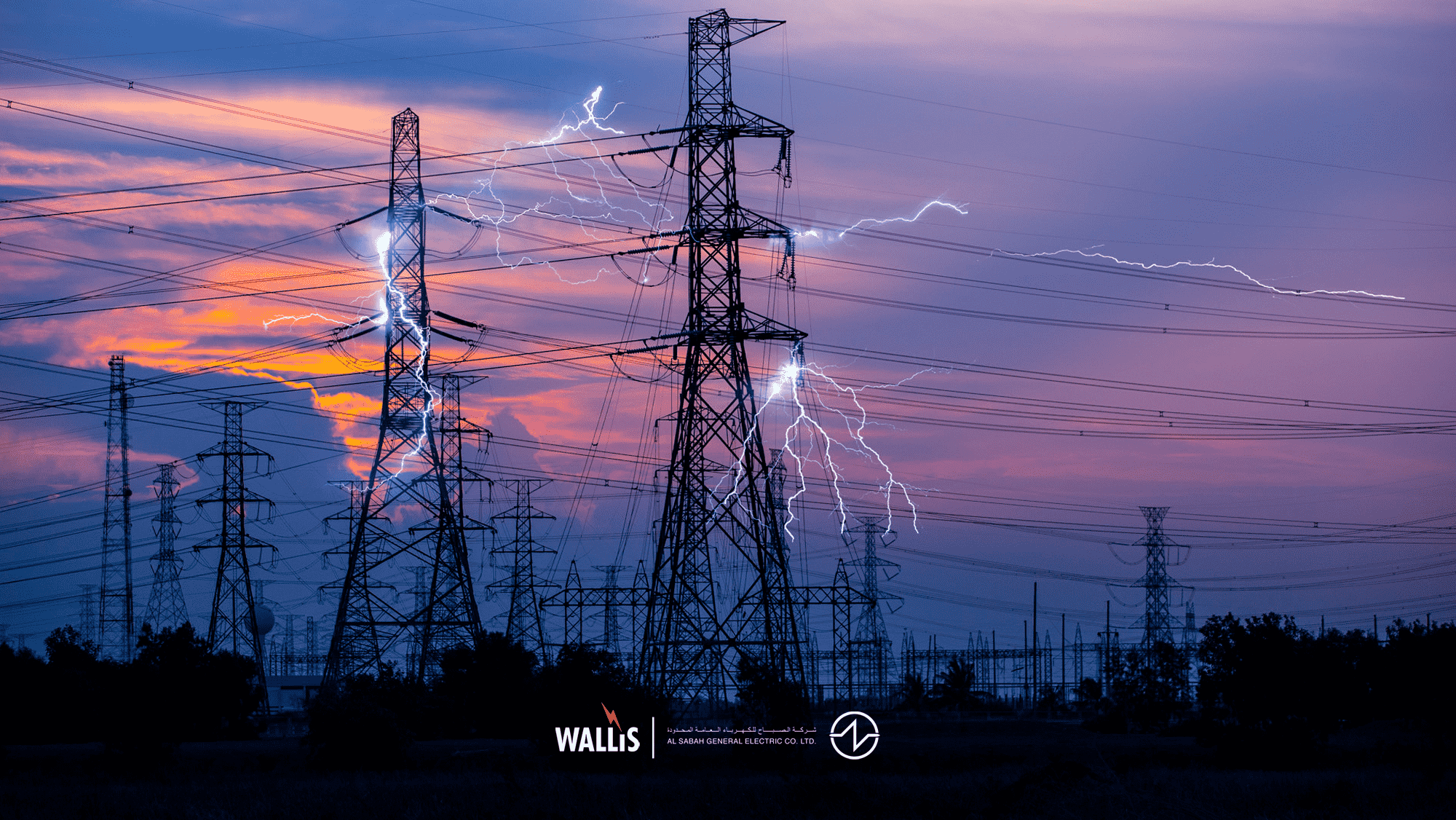In the realm of nature’s elements, few phenomena are as captivating and potentially hazardous as lightning. Its single bolt can unleash havoc on structures, electronics, and lives. Understanding How to Properly Ground Lightning for Safety is paramount in fortifying our homes against this formidable force.
Proper lightning grounding is the first line of defense against nature’s unpredictable strikes. This guide aims to demystify the complexities of lightning grounding, offering comprehensive principles and practical advice.
Exploring the nuances of grounding lightning, we navigate the balance between science and application, ensuring a safe discharge of lightning energy. Whether you’re a homeowner or a professional, this guide equips you with insights to protect your space.
Embark on this enlightening journey to safeguard your home and loved ones from nature’s potent force.
Why Lightning Grounding Matters?
In nature’s grand spectacle, lightning captivates with its awe-inspiring yet formidable presence. Amidst its breathtaking display, the importance of proper lightning grounding emerges as a vital defense against potential devastation. Understanding the significance of lightning grounding is essential for safeguarding structures, electronics, and lives.
Lightning grounding serves as a controlled pathway for the immense electrical energy of a strike to dissipate harmlessly into the Earth, averting perilous consequences such as fires and structural damage. Its role extends beyond physical protection, preserving electronic equipment and preventing costly damage in residential, commercial, and industrial settings.
Essentially, effective lightning grounding mitigates the destructive potential of strikes, ensuring the safety of inhabitants and the longevity of structures and systems. As we delve into its intricacies, we recognize its necessity as a crucial measure in safeguarding against nature’s powerful yet unpredictable force.
Lightning Grounding vs. Electrical Grounding
In the realm of electrical safety, the terms Lightning Grounding and Electrical Grounding often coexist, each serving distinct purposes and necessitating specific measures. Navigating the differences between these two grounding concepts is crucial for comprehending the nuances involved in securing structures against both routine electrical currents and the formidable force of lightning strikes.
Lightning Grounding
Lightning grounding is a specialized form of grounding designed explicitly to divert the immense energy generated by lightning strikes away from structures and into the ground. Unlike conventional electrical grounding, which primarily focuses on providing a safe path for electrical currents in routine situations, lightning grounding involves strategies to manage the sudden and intense surges induced by lightning. The key distinction lies in its capacity to handle the transient and unpredictable nature of lightning, safeguarding structures from the potential devastation caused by lightning strikes.
Electrical Grounding
Electrical grounding serves as a broad safety measure aimed at managing regular electrical currents, providing a path for safe dissipation of energy and preventing voltage build-up. While essential for daily operations, standard electrical grounding may not adequately address the sudden and immense energy spikes produced by lightning strikes. Specific lightning grounding systems are necessary to supplement standard electrical grounding, ensuring comprehensive protection against lightning-induced risks. Recognizing the disparities between lightning and electrical grounding is vital for designing robust safety protocols. Lightning grounding acts as a specialized defense mechanism against nature’s powerful forces, complementing standard electrical grounding for a comprehensive safety framework. As we distinguish between these grounding methods, it’s clear that effective strategies must address both routine electrical currents and the extraordinary energy of lightning storms.
The Science Behind Lightning Grounding
Understanding the intricate science behind lightning grounding is paramount to comprehending the mechanisms that shield structures from the immense energy of lightning strikes. As we delve into this realm, it becomes clear that the principles governing lightning grounding are rooted in physics and engineering, orchestrating a choreography to ensure a safe discharge of the colossal electrical energy generated during a lightning storm.
At the core of the science of lightning grounding lies the principle of providing a low-resistance pathway for the electrical energy to travel safely into the ground. When lightning strikes, the vast electrical charge seeks the path of least resistance. Effective lightning grounding leverages this principle by creating a strategically designed pathway that directs the energy away from structures, thus minimizing the risk of damage.
The science of lightning grounding involves the utilization of grounding electrodes, such as rods or plates, strategically positioned to enhance conductivity with the Earth. These electrodes act as efficient conduits, facilitating the dissipation of excess charge into the ground. Additionally, soil composition plays a crucial role, offering a low-resistance medium through which the electrical energy can disperse harmlessly. Understanding the specific resistivity of the soil is essential for optimizing the effectiveness of the grounding system.
Moreover, the science of lightning grounding acknowledges the transient nature of lightning strikes. Unlike continuous electrical currents, lightning produces sudden and intense surges of energy. Grounding systems tailored for lightning must accommodate this abrupt nature, ensuring that the discharge pathway can handle the rapid influx of energy without causing damage.
In essence, the science behind lightning grounding is a meticulous integration of principles from physics and engineering, customized to manage the extraordinary energy released during a lightning strike. The strategic placement of grounding elements, coupled with an understanding of soil resistivity, forms the foundation of an effective lightning grounding system. As we unravel the complexities of this science, it becomes apparent that a well-designed and correctly implemented lightning grounding system is not merely a protective measure; it is a calculated response to nature’s awe-inspiring yet potentially destructive force.
Professional Lightning Grounding Installation
When it comes to fortifying structures against the potent force of lightning, the installation of a lightning grounding system is not just a task – it’s a meticulous process that demands expertise and precision. Entrusting this critical responsibility to professionals is where Al Sabah shines, bringing a wealth of knowledge and a proven track record to ensure the installation is executed with the utmost proficiency.
Al Sabah’s Strategic Approach
Our expertise in lightning protection begins with a strategic approach to planning. Before any installation takes place, their professionals conduct thorough assessments of the structure, taking into account its size, design, and vulnerability to lightning strikes. This meticulous planning ensures that the lightning grounding system is tailored to the specific needs of the structure, optimizing its effectiveness.
Executing Flawless Lightning Grounding Installations
The execution of a lightning grounding installation demands technical proficiency, and our team is well-equipped with the knowledge and skills required. From the placement of grounding electrodes to the integration of surge protection measures, every step is carried out with precision. Our commitment to staying abreast of industry standards ensures that the installation meets and exceeds safety requirements.
Meeting Diverse Client Needs
Recognizing that every structure is unique, we provide tailored lightning grounding solutions to meet diverse client needs. Whether it’s a residential property, a commercial establishment, or an industrial facility, their expertise extends to creating bespoke installations that provide robust protection. Clients can rely on Al Sabah‘s proficiency to address specific challenges and deliver solutions that align with their unique requirements.
Our role in professional lightning grounding installation is characterized by precision in planning, technical proficiency, and the delivery of tailored solutions. Clients benefit not only from the installation of a robust lightning grounding system, but also from the assurance that it is executed with the expertise and attention to detail that defines Al Sabah’s commitment to excellence. Choosing Al Sabah means choosing an expert touch that transforms the installation of a lightning grounding system into a strategic investment in the safety and resilience of structures against nature’s unpredictable force.

Routine Maintenance
Following the meticulous installation of a lightning grounding system, the journey to safety continues with a commitment to regular maintenance. This ongoing care is essential for preserving the effectiveness of the investment and ensuring the system’s readiness to withstand nature’s forces.
Routine inspection is fundamental to maintaining the lightning grounding system’s peak condition. Al Sabah recognizes the ever-evolving nature of lightning protection and conducts regular inspections to assess the system’s health. By identifying and addressing potential issues promptly, we prevent any decline in the system’s performance.
Testing plays a vital role in routine maintenance, proactively verifying the lightning grounding system’s effectiveness. Utilizing advanced testing methods, we evaluate the system’s performance under simulated conditions, guaranteeing its ability to endure the intense energy surges of lightning strikes. This thorough testing process ensures that the lightning grounding investment remains a reliable defense against nature’s unpredictable forces.
Mitigating Risks through Maintenance
Routine maintenance goes beyond mere assessments – it includes prompt issue resolution. Our commitment to maintaining lightning grounding systems involves addressing any identified issues swiftly and efficiently. This proactive approach mitigates potential risks, preventing the escalation of minor concerns into major problems that could compromise the overall effectiveness of the lightning grounding system.
In conclusion, routine maintenance is a proactive commitment to preserving the efficacy of a lightning grounding system. Al Sabah‘s approach encompasses regular inspections, performance testing, and prompt issue resolution, ensuring that the investment made in lightning protection continues to deliver reliable and robust defense against the unpredictable forces of lightning. Choosing routine maintenance is not just a measure of care; it’s a strategic decision to uphold the safety and resilience of structures over the long term.





